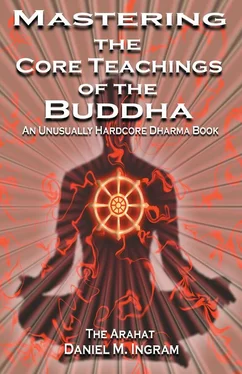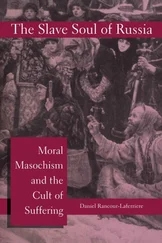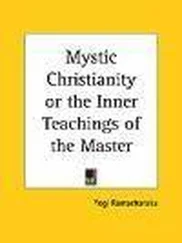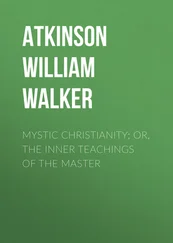Daniel Ingram - Mastering the Core Teachings of Buddha - An Unusually Hardcore Dharma Book
Здесь есть возможность читать онлайн «Daniel Ingram - Mastering the Core Teachings of Buddha - An Unusually Hardcore Dharma Book» весь текст электронной книги совершенно бесплатно (целиком полную версию без сокращений). В некоторых случаях можно слушать аудио, скачать через торрент в формате fb2 и присутствует краткое содержание. Год выпуска: 2009, ISBN: 2009, Издательство: Aeon Books, Жанр: Старинная литература, на русском языке. Описание произведения, (предисловие) а так же отзывы посетителей доступны на портале библиотеки ЛибКат.
- Название:Mastering the Core Teachings of Buddha - An Unusually Hardcore Dharma Book
- Автор:
- Издательство:Aeon Books
- Жанр:
- Год:2009
- ISBN:9781904658405
- Рейтинг книги:5 / 5. Голосов: 1
-
Избранное:Добавить в избранное
- Отзывы:
-
Ваша оценка:
- 100
- 1
- 2
- 3
- 4
- 5
Mastering the Core Teachings of Buddha - An Unusually Hardcore Dharma Book: краткое содержание, описание и аннотация
Предлагаем к чтению аннотацию, описание, краткое содержание или предисловие (зависит от того, что написал сам автор книги «Mastering the Core Teachings of Buddha - An Unusually Hardcore Dharma Book»). Если вы не нашли необходимую информацию о книге — напишите в комментариях, мы постараемся отыскать её.
Mastering the Core Teachings of Buddha - An Unusually Hardcore Dharma Book — читать онлайн бесплатно полную книгу (весь текст) целиком
Ниже представлен текст книги, разбитый по страницам. Система сохранения места последней прочитанной страницы, позволяет с удобством читать онлайн бесплатно книгу «Mastering the Core Teachings of Buddha - An Unusually Hardcore Dharma Book», без необходимости каждый раз заново искать на чём Вы остановились. Поставьте закладку, и сможете в любой момент перейти на страницу, на которой закончили чтение.
Интервал:
Закладка:
One of the factors that actually adds to the confusion is that the concentration state terminology (jhanas) is used in the original texts to describe both the progressively more sophisticated concentration states
Concentration vs. Insight
and also the progress of insight, with little delineation of which was which. This was solved to some degree a few hundred years later when the stages of the progress of insight were articulated in the canonical commentaries, but the original problem was not mentioned. It was only in the second half of the 20th Century that the problem was sorted out to some degree by the Burmese, and I will delineate the vipassana jhanas later.
To try to keep this clear in a way that the old texts simply don’t, whenever I refer to jhana without mentioning whether I mean samatha or vipassana jhana, I always mean samatha jhana, a stable state produced by concentration practices. When I refer to those jhanas produced by insight practices, I will always call them vipassana jhanas.
Concentration practices develop concentration but they don’t develop wisdom. The problem is that concentration states can easily fool people into thinking that they are the end goal of the spiritual path because these states can become so blissful, spacious, and even formless, and thus can closely match some imprecise descriptions or expectations of what awakening might be like.
However, concentration practices can be very helpful and are very important. Without at least some skill in concentration practices, insight meditation is virtually impossible. There is an esoteric debate in the ancient commentaries about some students who got enlightened without even attaining the lowest of the concentration states (the first jhana, explained later), practitioners called “dry insight workers,” but I wouldn’t bank on this being a common occurrence. Luckily, insight practices themselves can simultaneously develop concentration and insight, though the dangers of being seduced by concentration states can lie in wait there as well. In short, you must master the first jhana as a minimum basis for beginning the progress of insight, but this is all that is required for enlightenment.
So long as one is very clear about what is concentration practice and what is insight practice, which may not be as easy an understanding to come by as some might think, concentration practice beyond the first jhana can be helpful to the insight practitioner. All of the concentration states stabilize the mind, obviously, and this has four primary benefits.
First, just a movie camera that is shaking wildly will not be likely to 134
Concentration vs. Insight
produce a clear or intelligible movie, so a mind that won’t stay settled on an object will not clearly perceive the ultimate truth of it. Second, as concentration states cultivate deep clarity and stability on content, they are very useful for promoting deep and healing psychological insights.
Put another way, if you want to bring up your stuff, do concentration practices.
Third, concentration states can be a welcome and valid vacation from stress, providing periods of very deep relaxation and peace that can be an extremely important part of a sane, compassionate and healthy lifestyle. The Buddha highly praised those who had mastery of the concentration states, and this should serve as a reminder to those who underestimate their great value or erroneously feel that not enjoying one’s life is somehow “spiritual.” Fourth, concentration practices can help the insight practitioner stay somewhat more mentally stable and balanced as their old concepts of their existence are rent asunder by insight practice. However, if these states end up blocking this process by solidifying a sense of self as being anything or creating aversion to clearly experiencing suffering then they become a hindrance.
This is a very tricky balance. If a student clings to stability or fluidity they will surely not make progress in insight. However, if they plunge into the fast and harsh vibratory experiences of insight practice without the soothing effects of concentration practice to help them stay somewhat grounded, the student can be a bit like someone who has taken a small dose (or a big dose in the worst cases) of LSD or drunk way too much coffee. I spent the first five years of my practice giving only a moderate amount of attention to the samatha jhanas and I now realize that this was probably an error.
Sometimes spiritual openings can be extreme and dramatic, and being able to slow things down and calm down can sometimes be very useful and skillful if we have to deal with the world and deal with these openings at the same time. In short, if you want to gunk up your insight practice because you simply need to slow down so as to be able to get on with your life or not completely flip out, such as to study for medical school boards, etc., one way to do this is to indulge in concentration states. Coupling this with formal resolutions to not make progress in insight can be very effective.
135
Concentration vs. Insight
There are many concentration states, and they become progressively more refined as one masters them. A brief description of the concentration states follows. It is basically straight out of the standard texts and very accurate. Regardless of the tradition you are following, when you begin to get some mastery of its concentration practices you will go through these states in this order up to the level of your current ability, though some people can master skipping over jhanas.
The specific object of meditation may limit the level of jhana that can be attained, as well as color the experience of these states. Such details are spelled out in various canonical texts, such as The Vi
suddhimagga and the more readable but harder to find Vim
uttimagga .
Bhante Gunaratana’s The Jhanas, included in his more complete work The Path of Serenity and Insight, is a scholarly work on the subject, as is Nyanatiloka’s Path to Deliverance (published by the Buddhist Publication Society out of Sri Lanka).
Some of these texts (particularly the first two) go into long and sophisticated discussions about which posture and which object might be best suited to the individual proclivities of various types of people. It is unfortunate that this sort of information is not in common use today.
I suppose that a suit off the rack will work for most occasions, but there is something about one that has been tailor made. I am told that there are still a few monasteries that provide this sort of traditional training.
Unfortunately, this topic is way too complex to treat properly here, but those of you who are that serious about these subjects are highly advised to check out the original sources. They contain an astounding amount of powerful information but unfortunately make for fairly tedious reading.
Many traditions use the breath as the primary object initially and then shift to the qualities of the states themselves as the object of meditation when they arise and the concentration is strong. The quality of a jhana can either be “soft” or “hard” depending on how solidly one is in the state. In soft jhana, the qualities of that particular state are definitely recognizable in a way that is different from the ordinary experience of those qualities to the degree that we are confident we are in the altered state defined by those qualities.
136
Concentration vs. Insight
In really hard jhana, it feels as if our mind has been fused to those qualities and the object with super glue, as if we were nothing but a solid block or field of those qualities or that object, as if they and the object were the whole world with nothing else remaining. Getting into really
“hard” jhana states dramatically increases the beneficial effects of the practice, though it takes greater strength of concentration and usually requires more favorable practice conditions to do so. Taking the beneficial factors of the jhana solely as the object of concentration is helpful for this, as can be using an easily identified external object such as a candle flame or colored disk.
Читать дальшеИнтервал:
Закладка:
Похожие книги на «Mastering the Core Teachings of Buddha - An Unusually Hardcore Dharma Book»
Представляем Вашему вниманию похожие книги на «Mastering the Core Teachings of Buddha - An Unusually Hardcore Dharma Book» списком для выбора. Мы отобрали схожую по названию и смыслу литературу в надежде предоставить читателям больше вариантов отыскать новые, интересные, ещё непрочитанные произведения.
Обсуждение, отзывы о книге «Mastering the Core Teachings of Buddha - An Unusually Hardcore Dharma Book» и просто собственные мнения читателей. Оставьте ваши комментарии, напишите, что Вы думаете о произведении, его смысле или главных героях. Укажите что конкретно понравилось, а что нет, и почему Вы так считаете.












